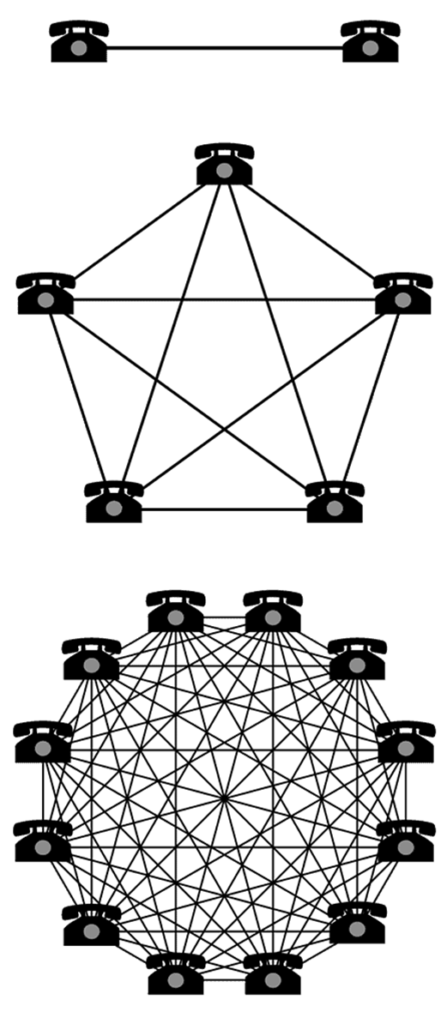From Networks to the Turing Award: How Robert Metcalfe Changed the Internet and the World
Andrei Mihai
The 2022 ACM A.M. Turing Award was awarded to Robert “Bob” Metcalfe. Often regarded as the highest prize in computing, the Turing Award is often referred to as the “Nobel Prize of Computing.” Metcalfe was awarded the prize for the “invention, standardization, and commercialization” of one of the earliest, most impactful, and most extensively utilized networking technologies – Ethernet.
But it was not always smooth sailing for Metcalfe.

In 1972, Bob Metcalfe’s defense of his PhD thesis was rejected. Harvard professors thought his thesis (which was focused on ARPANET, a precursor of the internet) lacked enough “intellectual content,” so they failed him. Metcalfe suspects there were also other factors at play (like Harvard not allowing him to do some of the work he wanted, and him doing said work at MIT instead), but the end result was that the thesis was rejected.
This event is remarkable for several reasons. First of all, rejecting research on the proto-internet is, at the very least, a questionable decision. But it is even more remarkable because of the chain of events that it triggered.
Even without knowing that ARPANET was about to become one of the most impactful inventions in history, this type of rejection can be very painful, especially for an up-and-coming researcher. But Metcalfe saw an opportunity in this. While thinking about how to change the focus of his thesis, he read a paper on the ALOHA network that had recently been developed at the University of Hawaii. ALOHA was a pioneering networking system for computers and provided the first public demonstration of a wireless data packet over a network. Metcalfe realized that if the internet was to take off, network communication would do the same – so he made that the focus of his thesis and his work.
Metcalfe would go on to invent Ethernet, which is still widely used today as the “plumbing of the internet”, become an entrepreneur, and in 2023, win the Turing Award, the highest honor in computer science. Without the original failure, none of these may have ever happened, and Ethernet may have never seen the light of day.
Networks Make the World Go Round
When it comes to computers, many things have changed in the past three decades. The smartphones we carry in our pockets are millions of times more powerful than the computers that took the Apollo astronauts to the moon. But among the few things that have endured is Ethernet.
Ethernet is essentially a family of computer networking technologies commonly used for local area networks (LAN) or wide area networks (WAN). Wireless may be all the rage now, but Ethernet really makes the internet function – and it is what enabled us to access the internet without using dial-up.

The early history of Ethernet is murky. It is often claimed that Ethernet was invented on May 22, 1973, when Metcalfe wrote a memo to his bosses at the Xerox Palo Alto Research Center, where he was working. Metcalfe himself disputes that story and says it was a far more lengthy process that happened gradually over several years. For his thesis, Metcalfe discovered and fixed a few bugs with ALOHA, which would ultimately get him a doctorate, but the Ethernet patent was only granted in 1975, and a scientific paper describing Ethernet only came out in 1976. In the paper (which now has almost 3,000 citations), Metcalfe and his assistant David Boggs describe the system thusly:
“Ethernet is a branching broadcast communication system for carrying digital data packets among locally distributed computing stations. The packet transport mechanism provided by Ethernet has been used to build systems which can be viewed as either local computer networks or loosely coupled multiprocessors.”
By 1980, Ethernet was ready to go out into the world with an upgrade that improved the transfer speed from 2.94 Mbit/s to 10 Mbit/s.
Let us take a step back to appreciate just how big this was. If all you are familiar with is high-speed, modern, wireless internet, that may not mean much. But for most people in the 1990s and early 2000s, this speed was unimaginable (that is, if they were fortunate enough to have the internet at all). AOL was probably the most famous dial-up provider and, at their peak in 2000, they had 23.2 million subscribers. Dial-up modems have a transfer speed limit of 56 kbit/s, although in practice, most were closer to 40 kbit/s – that is several hundreds of times slower than what Ethernet was able to provide back in 1980.
No one realized this better than Metcalfe.
Metcalfe’s Law
By 1980, Metcalfe had already left his job and was a budding entrepreneur running his own company that manufactured computer networking equipment. It was about to be a crazy decade as – unsurprisingly – Ethernet became increasingly popular.
It was not just the speed that made Ethernet so desirable. It was cheaper than other cabling alternatives, and compared to LAN or WLAN technology, it was less vulnerable to disruptions and security breaches. In the early and lawless days of the internet, this was a great advantage (not that it is any less important today). This is why to this day, many local networks of organizations that value privacy and security (like universities, businesses, and hospitals) use Ethernet instead of WiFi, although WiFi is more convenient in some regards.
Unlike many other technologies, Ethernet has also maintained backward compatibility throughout the years. This means that as newer Ethernet versions and software have emerged, they have always still been compatible with older models of the same product, which has only helped the networks grow in size.
Metcalfe also correctly realized how financially important it was for your network to grow. He postulated a law that bears his name: Metcalfe’s law states that the financial value of a telecommunications network is proportional to the square of the number of connected users. While several other researchers (including Metcalfe himself) have tweaked the law, empirical data has backed it up remarkably. In 2017, for instance, one paper found that over 70% of the variance in Bitcoin value can be explained by applying Metcalfe’s law to the Bitcoin network size.

As his company thrived, the accolades started pouring in for Metcalfe. He received several high-standard awards for the invention of Ethernet, the standardization of computer networking, and his law, but this did not prevent him from having his fair share of adventures – and not all were happy ones.
Predictions and Prizes
In 1990, the board of directors at the company he founded voted for a different CEO, prompting Metcalfe to leave the company. He would go on to spend 10 years as a publisher, technology pundit, and venture capitalist. In a written column, he made several striking predictions that did not come true, but none as spectacular as his 1995 claim that the internet would collapse and remain populated by ghost websites.
Metcalfe was so convinced that he was right that he promised to “eat his words” if he was wrong. A man of his word, at the sixth International World Wide Web Conference in 1997, Metcalfe printed out his column, blended it with some liquid, and ate it with a spoon.
In the past 20 years, Metcalfe seems to have focused more on his academic career, collaborating with several leading universities including The University of Texas at Austin as well as MIT.
Fast forward to March 2023, and Metcalfe became the latest in a string of internet pioneers to be awarded the Turing Award for his contributions to the invention of Ethernet technology, joining the likes of Sir Tim Berners-Lee (2016), Vint Cerf and Robert Kahn (2004), as well as Whitfield Diffie and Martin Hellman (2015).
The inconspicuous Ethernet is the “plumbing” of the internet and without it, modern life would probably look very different than what we see today.
The impact of Ethernet was perhaps best described by ACM A.M. Prize in Computing recipient and SVP of Google Research and AI, Jeff Dean:
“Ethernet is the foundational technology of the Internet, which supports more than 5 billion users and enables much of modern life … Today, with an estimated 7 billion ports around the globe, Ethernet is so ubiquitous that we take it for granted. It’s easy to forget that our interconnected world would not be the same if not for Bob Metcalfe’s invention and his enduring vision that every computer needed to be networked.”
The post From Networks to the Turing Award: How Robert Metcalfe Changed the Internet and the World originally appeared on the HLFF SciLogs blog.